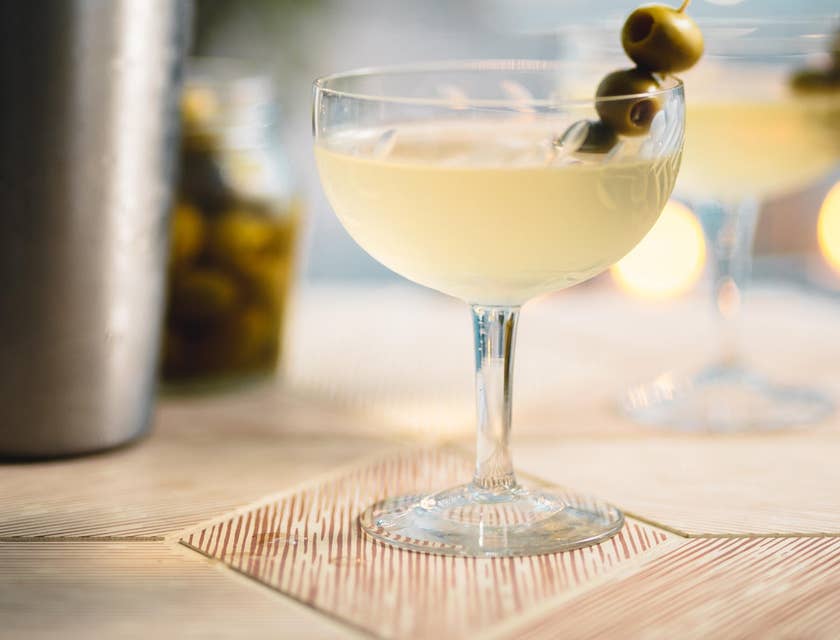The martini is probably the world’s most well known cocktail. The “martini glass” is a synonym for the standard cocktail glass. Did you know? A martini glass is ever so slightly different, from a standard cocktail glass. The martini is the world’s most personalize-able cocktail. There is a whole phraseology available to the bar patron, allowing them to dictate exactly how they would like this simple, two or three, ingredient drink prepared.
These words and phrases, to the unknowing, can seem like a secret code, used by only those that have been entered into some special martini club. This is not true, yet this jargon will put some off from ordering a martini at the bar; less they look like fool. It is also terminology that every good bartender should know. Martini drinkers can be rather particular about their cocktail. If a bartender can make it right, their new patron will quickly fall in love with them. Being able to produce martinis that exactly fit the customer’s desires is something a bartender should pride themselves on.
Whether you be a martini drinker, a bartender or any other employee in a restaurant, there is always a reason to know the variations of the martini and the terminology which goes with it. Here they are in all their glory!
Martinis were almost all stirred until Ian Fleming’s famous spy, Bond, James Bond, shook up the martini world by ordering his “shaken, not stirred.” Shaken is now the preference. “Shaken or stirred?” is the second question a bartender should ask their bar patron, after determining which type and brand of liquor a they would prefer.

Straight Up or On The Rocks?
This question is directed at the martini purchaser. However, “Straight Up or On The Rocks?” is often neglected by many bartenders, because straight up service is automatically assumed due to its popularity. When served straight up the cocktail is prepared and strained into a chilled martini glass.
When served over rocks the martini is prepared and then strained over fresh ice. Unrelated to the two, some patrons will ask for “the rocks on the side” meaning they wish the bartender to pour the rocks they shook or stirred the martini with into a separate glass and serve them alongside the martini.
Dry, Extra Dry, Bone Dry and Wet
These four terms deal with the amount of dry vermouth in the cocktail. The trick to remembering them is that the terms mean the opposite of what you would expect them to mean.
- Dry – Less vermouth, usually around half the amount you would usually put in your martinis.
- Extra Dry – No dry vermouth at all.
- Bone Dry – A rinse of dry vermouth for the glass. But none in the cocktail.
- Wet – Means adding extra dry vermouth. This is usually 50% more but up to double the amount.
How To Be A Bartender – What is a Martini?
FAQ
What was martini original name?
What is a regular martini called?
What is a vodka martini?
The martini is a cocktail made with gin and vermouth, and garnished with an olive or a lemon twist. Over the years, the martini has become one of the best-known mixed alcoholic beverages. A popular variation, the vodka martini, uses vodka instead of gin for the cocktail’s base spirit.
What drinks can be called a martini?
The thing is: so many different drinks can be called a martini! Here are the two main categories of martinis: Dry martinis: The original! The classic martini is gin and vermouth: searing and spirit forward. There are several types of martinis that vary the basic components in this category.
Why is it called a martini?
In short, the only people who struggle with the last martini origin story are Americans. European bartenders have fully accepted this as the logical reason for the name martini. While their presence and proportions may be questioned, there are three ingredients that will always come to mind when you think of a martini.
Why is a Martini called a maraschino?
This cocktail, made with gin, sweet vermouth, and Maraschino liqueur, was likely named after Martinez, California. The first printed recipe for a martini was in 1888, but it looked more like the Martinez than what it is today.
